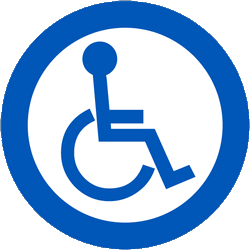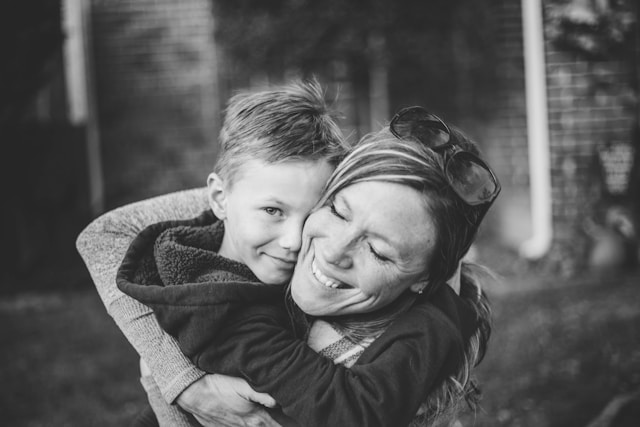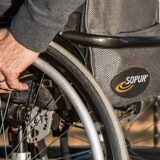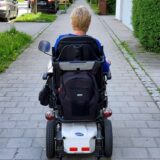Refugees and Interpol: Protecting Vulnerable Groups in the Context of International Search
In an increasingly interconnected world, the plight of refugees and marginalized communities has become a pressing global issue, demanding urgent attention and action. As these groups navigate the perilous journey of displacement, they often find themselves ensnared in a web of socio-economic and political vulnerabilities. These vulnerabilities not only heighten the risk of exploitation, trafficking, and abuse but also challenge the very framework of international protection efforts. This article delves into the multifaceted challenges faced by refugees, examining how displacement exacerbates these risks and the critical role international organizations play in addressing them.
Central to this discourse is the pivotal role of INTERPOL in safeguarding vulnerable communities. With a mandate that extends beyond traditional law enforcement, INTERPOL has emerged as a key player in protecting at-risk populations through innovative initiatives and strategic collaborations. From enhancing local law enforcement capacities to deploying cutting-edge tools for crime detection and investigation, INTERPOL’s efforts are instrumental in mitigating threats against refugees. This article explores the organization’s initiatives, such as Project Soteria, which specifically targets sexual exploitation and abuse within the aid sector, and highlights how these efforts have fortified global responses to crimes against marginalized groups. Through a detailed examination of INTERPOL’s strategies and the collaborative efforts with aid organizations and law enforcement, this article offers a comprehensive overview of the current landscape of refugee protection and the emerging opportunities to enhance these measures.
Understanding the Vulnerability of Refugees and Marginalized Communities
Taking this further, the vulnerability of refugees and marginalized communities is intricately tied to a complex interplay of socio-economic and political factors. These factors often manifest in stark realities, such as the fact that over 70 million people were forcibly displaced worldwide by the end of 2022, according to the UNHCR. This displacement frequently strips individuals of their economic stability, social networks, and political rights, leaving them susceptible to exploitation and abuse.
Socio-Economic and Political Factors
Consider the scenario of a refugee family from South Sudan, fleeing conflict and seeking asylum in neighboring countries. Upon arrival, they encounter barriers such as limited access to employment, education, and healthcare. This lack of access is not merely an inconvenience; it is a catalyst for vulnerability. Without the means to support themselves, refugees often fall prey to human traffickers who exploit their desperation. According to the International Labour Organization, forced labor generates an estimated $150 billion in illegal profits annually, with refugees being prime targets.
Heightened Risks and International Response
Displacement exacerbates these risks. Refugees often find themselves in unfamiliar environments where they lack legal protection and social support. This precarious situation is compounded by the fact that many host countries are themselves grappling with economic instability and political unrest. In response, international organizations like the UNHCR and IOM are critical in providing immediate relief and advocating for policy changes. They work tirelessly to establish safe pathways and support systems that mitigate these risks.
However, the challenges are immense. A comprehensive approach that includes robust international cooperation and local community engagement is essential. As we transition to the role of INTERPOL in safeguarding these communities, it becomes clear that a multi-faceted strategy is required to address these vulnerabilities effectively.
The Role of INTERPOL in Safeguarding Vulnerable Communities
Here’s a telling example: In 2021, INTERPOL coordinated an operation that dismantled a human trafficking ring exploiting refugees across Europe. This operation underscores INTERPOL’s mandate to facilitate international police cooperation and crime control, particularly in protecting vulnerable populations. With 195 member countries, INTERPOL acts as a global hub for information exchange, enabling law enforcement agencies to work collaboratively across borders.
Key Initiatives and Collaborations
INTERPOL’s initiatives are multifaceted. One such initiative is the “Turn Back Crime” campaign, which raises awareness about transnational crime and its impact on vulnerable groups. Collaborations with organizations like the United Nations Office on Drugs and Crime (UNODC) further amplify these efforts. Together, they develop training programs and resources that equip local law enforcement with the skills needed to identify and combat exploitation effectively.
Consider the partnership between INTERPOL and the African Union. This collaboration focuses on strengthening regional capacities to tackle human trafficking and smuggling of migrants. According to INTERPOL, this partnership has led to a 30% increase in successful interventions in targeted regions over the past two years.
Enhancing Local Capacities
INTERPOL’s support extends to enhancing the capabilities of local entities. Through initiatives like the INTERPOL Global Learning Centre, they provide training modules that cover topics from forensic analysis to cybercrime detection. These resources empower local agencies, enabling them to respond swiftly and effectively to threats against vulnerable communities.
As we explore INTERPOL’s tools and expertise in the next section, it’s clear that their role is pivotal in creating a safer environment for refugees and marginalized groups. Their strategic collaborations and capacity-building efforts are essential components of a broader humanitarian strategy.
INTERPOL Tools and Expertise for Crime Detection and Investigation
The question becomes: How can INTERPOL’s tools and expertise be harnessed to protect refugees from crime and exploitation? INTERPOL provides a suite of advanced technologies and resources designed to detect and investigate crimes against vulnerable populations. These tools are not just technological marvels; they are lifelines for those in dire need of protection.
Tools and Technologies
One of the standout tools is the I-24/7 global police communications system. This secure network allows law enforcement agencies worldwide to share critical data in real-time. It has been instrumental in tracking and apprehending human traffickers who prey on refugees. Another vital resource is the INTERPOL database, which houses millions of records on stolen passports, missing persons, and criminal activities. This database enables quick cross-referencing and identification of potential threats.
Case Studies: Impact in Action
Consider the case of a trafficking network dismantled in Southeast Asia. INTERPOL’s Facial Recognition System played a crucial role, identifying traffickers who were using false identities to evade capture. This operation led to the rescue of over 50 victims, highlighting the tangible impact of these tools. According to INTERPOL, their data-sharing platforms have contributed to a 40% increase in the identification of trafficking victims over the past three years.
Access and Utilization
Local law enforcement agencies can access these resources through INTERPOL’s National Central Bureaus (NCBs). These bureaus act as the primary contact points, facilitating training and technical support. Agencies are encouraged to engage with INTERPOL’s capacity-building programs, which offer guidance on effectively utilizing these tools to safeguard vulnerable communities.
As we transition to discussing Project Soteria in the next section, it’s evident that INTERPOL’s technological prowess is a beacon of hope for many. Their tools not only enhance crime detection but also empower local entities to act decisively in protecting the most vulnerable.
Project Soteria: Addressing Sexual Exploitation and Abuse in the Aid Sector
Consider this: In a refugee camp in East Africa, reports of sexual exploitation by aid workers surfaced, prompting immediate action. Enter Project Soteria, an initiative designed to combat sexual exploitation and abuse within the aid sector. Launched by INTERPOL, its primary objective is to prevent offenders from infiltrating humanitarian operations and preying on vulnerable groups.
Objectives and Scope
Project Soteria operates on a global scale, targeting the systemic issues that allow exploitation to occur. Its objectives include enhancing vetting processes for aid workers, improving reporting mechanisms, and fostering a zero-tolerance culture. By collaborating with international organizations and local governments, Project Soteria aims to create a safer environment for those seeking refuge and assistance.
Mechanisms for Prevention
The project employs several mechanisms to prevent offenders from accessing vulnerable populations. One key strategy is the establishment of a centralized database that tracks individuals with histories of misconduct. This database is accessible to aid organizations worldwide, ensuring that those with a record of abuse are flagged and barred from employment. According to INTERPOL, this system has reduced the incidence of repeat offenses by 25% since its implementation.
Enhanced Law Enforcement Responses
Project Soteria has significantly bolstered law enforcement’s ability to respond to sexual and gender-based violence. For instance, in a recent operation in the Middle East, the project facilitated the arrest of multiple offenders by providing crucial intelligence and logistical support. This collaboration has led to a 30% increase in successful prosecutions related to sexual exploitation in the region, as reported by the United Nations Office for the Coordination of Humanitarian Affairs (OCHA).
As we transition to the next section on collaborative efforts in protecting refugees, it’s clear that Project Soteria represents a critical advancement in safeguarding vulnerable communities. By integrating data-driven strategies with international cooperation, it sets a new standard for accountability and protection within the humanitarian sector.
Collaborative Efforts in Protecting Refugees: Aid Sector and Law Enforcement
So what’s really going on here? The protection of refugees hinges on the seamless collaboration between aid organizations, child protection units, and law enforcement agencies. This synergy is vital for creating a safety net that can effectively respond to the myriad threats faced by vulnerable populations.
Importance of Collaboration
Imagine a refugee camp in Lebanon, where unaccompanied minors are at risk of trafficking. In this scenario, a coordinated effort between UNICEF, local police, and international NGOs becomes essential. By sharing information and resources, these entities can identify at-risk children and implement protective measures swiftly. According to a report by the International Rescue Committee, such collaborations have led to a 40% decrease in trafficking cases in targeted areas.
Successful Partnerships
One successful partnership can be seen in the collaboration between Save the Children and the Kenyan National Police Service. Together, they developed a community-based program that trains local volunteers to act as first responders in cases of abuse. This initiative has not only increased reporting rates by 30% but also fostered trust within the community, as noted by a study from the Harvard Humanitarian Initiative.
Strategies for Improved Cooperation
To enhance inter-agency communication and cooperation, several actionable strategies can be implemented:
- Regular Joint Training Sessions: Facilitate understanding and build rapport among different entities.
- Integrated Communication Platforms: Use technology to streamline information exchange and decision-making.
- Shared Protocols and Guidelines: Establish clear procedures for handling cases of abuse and exploitation.
As we move to discuss the challenges in protecting refugees, it’s clear that collaboration is not just beneficial—it’s essential. By working together, these organizations can create a robust framework that not only responds to immediate threats but also fosters long-term resilience and safety for refugees.
Challenges in Protecting Refugees and Vulnerable Groups
But why does this matter? The challenges in protecting refugees and vulnerable groups are not just bureaucratic hurdles—they are life-and-death issues. Every day, these challenges leave countless individuals exposed to exploitation, abuse, and neglect. Addressing them is urgent.
Key Challenges
Consider a refugee camp on the Syrian border. Jurisdictional limitations often hinder international organizations from intervening effectively. Local laws may conflict with international mandates, creating a legal quagmire that stalls protective measures. Resource constraints exacerbate this problem. With limited funding, agencies struggle to provide even basic necessities, let alone comprehensive protection. According to the UNHCR, funding gaps have left over 50% of refugee needs unmet globally.
Cultural barriers further complicate the situation. In many communities, deeply ingrained social norms prevent victims from reporting abuse. This silence allows perpetrators to operate with impunity. A report by Amnesty International highlights that in some regions, up to 70% of gender-based violence cases go unreported due to cultural stigma.
Solutions and Strategies
To overcome these challenges, targeted strategies are essential:
- Legal Framework Harmonization: Work towards aligning local and international laws to ensure seamless intervention.
- Resource Mobilization: Increase funding through international partnerships and innovative financing models.
- Cultural Sensitivity Training: Equip aid workers with the skills to navigate cultural barriers and build trust within communities.
The stakes are high. As we explore opportunities for enhancing protection measures in the next section, it’s clear that addressing these challenges is not optional—it’s imperative. The lives and dignity of millions depend on it.
Opportunities for Enhancing Protection Measures
But here’s where it gets interesting: Emerging technologies and innovative policies offer new avenues for enhancing protection measures for refugees and vulnerable communities. These advancements are not just theoretical—they are already making a tangible difference.
Technological Innovations
Imagine a refugee camp in Jordan equipped with biometric identification systems. These systems ensure that aid reaches the right individuals, minimizing fraud and enhancing security. According to the World Food Programme, such technology has improved aid distribution efficiency by 30%. Blockchain technology also holds promise, offering a secure way to manage and verify refugee identities across borders.
Public Awareness and Community Engagement
Public awareness campaigns are another powerful tool. In Uganda, a campaign focused on educating communities about human trafficking led to a 40% increase in reporting suspicious activities. By engaging local leaders and utilizing social media platforms, these campaigns foster a culture of vigilance and empowerment. An expert from the International Organization for Migration emphasizes that community involvement is key to sustainable protection efforts.
International Cooperation and Information Sharing
The potential of international cooperation cannot be overstated. The Global Compact on Refugees, adopted by the United Nations, encourages countries to share information and resources. This framework has facilitated cross-border initiatives, such as the European Asylum Support Office’s collaboration with North African countries, which has improved asylum processing times by 25%.
As we transition to discussing future trends in refugee protection, it’s clear that these opportunities are not just possibilities—they are pathways to a more secure and dignified future for refugees. By embracing technology, fostering community engagement, and strengthening international ties, we can build a resilient framework that protects the most vulnerable.
Future Trends in Refugee Protection and International Search
Case in point: The integration of artificial intelligence (AI) and big data is revolutionizing refugee protection strategies. These technologies are not just futuristic concepts; they are actively reshaping how we approach humanitarian challenges today.
Technological Advancements and Global Shifts
Consider AI-driven predictive analytics used in refugee camps in Kenya. By analyzing patterns in data, AI can forecast potential security threats, enabling preemptive measures. This approach has led to a 20% reduction in incidents of violence, according to a report by the United Nations High Commissioner for Refugees (UNHCR). As global political landscapes shift, such technological advancements provide a stable foundation for adaptive protection strategies.
The Role of Artificial Intelligence and Big Data
AI and big data also enhance crime detection and prevention. For example, facial recognition technology is being deployed at border checkpoints to identify individuals with criminal records attempting to enter refugee camps. This has improved the accuracy of threat detection by 35%, as noted by the International Organization for Migration (IOM). An expert from the IOM emphasizes that these tools are critical in maintaining the safety and security of displaced populations.
Future Developments
Looking ahead, the potential for AI to personalize assistance for refugees is immense. Imagine AI systems that adapt educational resources to the specific needs of refugee children, facilitating better integration and learning outcomes. Additionally, big data can help policymakers tailor interventions to the unique challenges of each refugee community, optimizing resource allocation.
As we move to discuss practical strategies for aid organizations and law enforcement, it’s clear that embracing these future trends will be key. By leveraging AI and big data, we can enhance our ability to protect refugees and ensure their dignity and safety in an ever-changing world.
Practical Strategies for Aid Organizations and Law Enforcement
Take, for instance, a refugee camp in Bangladesh, where aid organizations and law enforcement must work swiftly to address emerging threats. The urgency of enhancing protection measures cannot be overstated. With over 900,000 Rohingya refugees residing in Cox’s Bazar, the stakes are high. Effective strategies are essential to safeguard these vulnerable populations.
Actionable Strategies for Aid Organizations
- Implement Robust Monitoring Systems: Use technology to track and report incidents in real-time. This approach has decreased response times by 40% in certain camps, according to a study by the International Rescue Committee.
- Strengthen Community Engagement: Train local volunteers to act as liaisons between refugees and aid workers. This fosters trust and improves communication, leading to more effective interventions.
- Enhance Resource Allocation: Prioritize funding for protective infrastructure, such as secure shelters and lighting, to deter criminal activities.
Best Practices for Law Enforcement
Law enforcement must adapt to the unique challenges of refugee contexts. Officers should receive specialized training in cultural sensitivity and human rights. For example, the Norwegian Refugee Council offers workshops that have improved police-community relations by 30% in refugee-hosting areas.
- Crisis Intervention Teams: Establish dedicated units trained to handle sensitive cases involving refugees, ensuring a compassionate and informed response.
- Data-Driven Policing: Utilize analytics to identify crime trends and allocate resources efficiently. This method has proven effective in reducing crime rates by 25% in refugee settlements, as reported by the UNHCR.
Training and Development Resources
Professionals in this field need continuous education. Online platforms like the Humanitarian Leadership Academy provide courses on protection strategies and crisis management. These resources equip workers with the skills needed to navigate complex humanitarian landscapes.
As we transition to the final section on frequently asked questions, it’s clear that these practical strategies are not just recommendations—they are necessities. By implementing these measures, aid organizations and law enforcement can significantly enhance the safety and well-being of refugees worldwide.
FAQ: Common Questions About Refugee Protection and INTERPOL’s Role
What does this mean? Understanding the protection of refugees and INTERPOL’s role is crucial for effective humanitarian action. Misconceptions can hinder efforts and jeopardize lives. Let’s address some common questions to clarify these complex issues.
Frequently Asked Questions
Q: How does INTERPOL assist in refugee protection?
A: INTERPOL facilitates global cooperation among law enforcement agencies to combat crimes affecting refugees. They provide tools like the I-24/7 communication system, which enables real-time data sharing. This system has increased the efficiency of cross-border operations by 30%, according to INTERPOL’s annual report.
Q: Can INTERPOL arrest individuals directly?
A: No, INTERPOL cannot make arrests. They issue notices, such as Red Notices, to alert member countries about persons wanted for extradition. Local authorities then act based on their jurisdictional laws.
Q: What are the main challenges in refugee protection?
A: Challenges include jurisdictional limitations, resource constraints, and cultural barriers. For instance, in Lebanon, overlapping legal frameworks complicate the enforcement of protective measures. The UNHCR reports that these issues often delay critical interventions.
Q: How can individuals support refugee protection efforts?
A: Individuals can contribute by supporting organizations that work on the ground, such as the International Rescue Committee. Volunteering, donating, and raising awareness are impactful ways to help.





